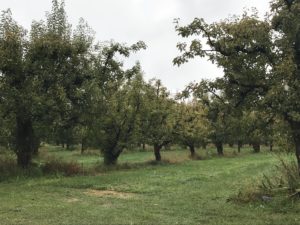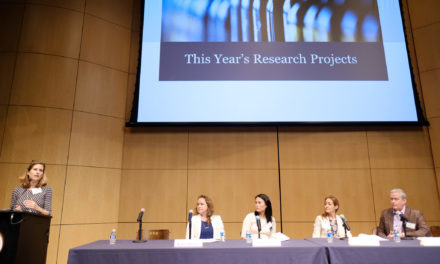The work of dedicated scientists has done much to advance the beverage industries over the years. Think of what the Australian Wine Research Institute has done for wine, or the contributions to brewing from Belgium’s Leuven Institute for Beer Research. There are important cider research institutes as well, notably France’s Institut Français des Productions Cidricoles, and the Long Ashton Research Station in the United Kingdom (sadly now closed). However, without a strong market for cider in the United States, there was little incentive for universities to spend their limited budgets studying cider. In the last 20 years, this situation has changed dramatically, and research that will benefit the cider industry is now moving full steam ahead.
 It’s not surprising that the largest—though not only—research programs are located in the states that grow the most apples, Washington and New York, which produced 74 percent of the U.S. crop in 2018. Of particular interest is work on growing fruit specifically for cider production, notably specialty cultivars having a higher phenolic content, which can enhance both a cider’s body and aging potential. Studies of the phenolic content and juice quality of a variety of cultivars grown in varying climates can be useful to cidermakers, but growers also need to better understand the economics of switching to or adding varieties that can’t easily be sold into other markets.
It’s not surprising that the largest—though not only—research programs are located in the states that grow the most apples, Washington and New York, which produced 74 percent of the U.S. crop in 2018. Of particular interest is work on growing fruit specifically for cider production, notably specialty cultivars having a higher phenolic content, which can enhance both a cider’s body and aging potential. Studies of the phenolic content and juice quality of a variety of cultivars grown in varying climates can be useful to cidermakers, but growers also need to better understand the economics of switching to or adding varieties that can’t easily be sold into other markets.
Researchers at Washington State University and Cornell University have both conducted studies relating to the economics of planting and maintaining a specialty cider apple orchard, the results of which confirmed that, in the long run, revenues did exceed production costs with payback periods of 10 to 16 years. Labor costs were the most significant operating expense, compounded (particularly in Washington) by a recent increase in the minimum wage for agricultural workers and an overall increasing scarcity of labor.
Labor in the orchard is needed for any number of things throughout the year, pruning and fruit thinning, for example. Harvesting is certainly the most labor intensive activity as, unlike in the cidermaking countries of Europe, almost all apples in the United States are harvested by hand. Researchers at WSU have been evaluating potential mechanical harvesting systems for some years. Results of the most recent study were reported at the American Cider Association’s annual conference in January 2020.
 Two orchard designs, medium-density freestanding and high-density tall-spindle trellised, and two different mechanical harvest systems were compared over five years. While the data showed that both types of orchards and associated harvesters were economically feasible, there were distinct advantages to the tall-spindle system and an over-the-row harvester. Though year one costs were significantly higher due to higher costs for the trees and trellises ($20,000 or more per acre), earlier productivity and greater yield per acre meant that gross returns covered about 95 percent of the orchards’ cost by year four, compared to only 78 percent of the costs of the freestanding system in the same period. Payback periods were also several years shorter with the tall-spindle system. Neither system was economically feasible for orchards under nine acres, though, due to the high costs of the harvesting equipment.
Two orchard designs, medium-density freestanding and high-density tall-spindle trellised, and two different mechanical harvest systems were compared over five years. While the data showed that both types of orchards and associated harvesters were economically feasible, there were distinct advantages to the tall-spindle system and an over-the-row harvester. Though year one costs were significantly higher due to higher costs for the trees and trellises ($20,000 or more per acre), earlier productivity and greater yield per acre meant that gross returns covered about 95 percent of the orchards’ cost by year four, compared to only 78 percent of the costs of the freestanding system in the same period. Payback periods were also several years shorter with the tall-spindle system. Neither system was economically feasible for orchards under nine acres, though, due to the high costs of the harvesting equipment.
Larger growers may find these studies encouraging, but for now, smaller growers may have to find other ways to make the numbers work.











